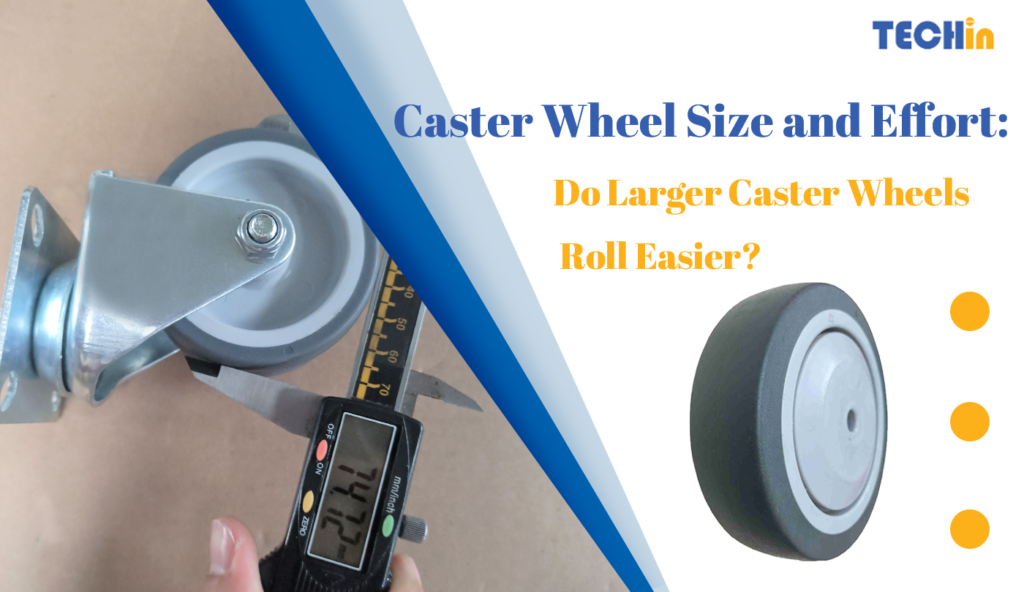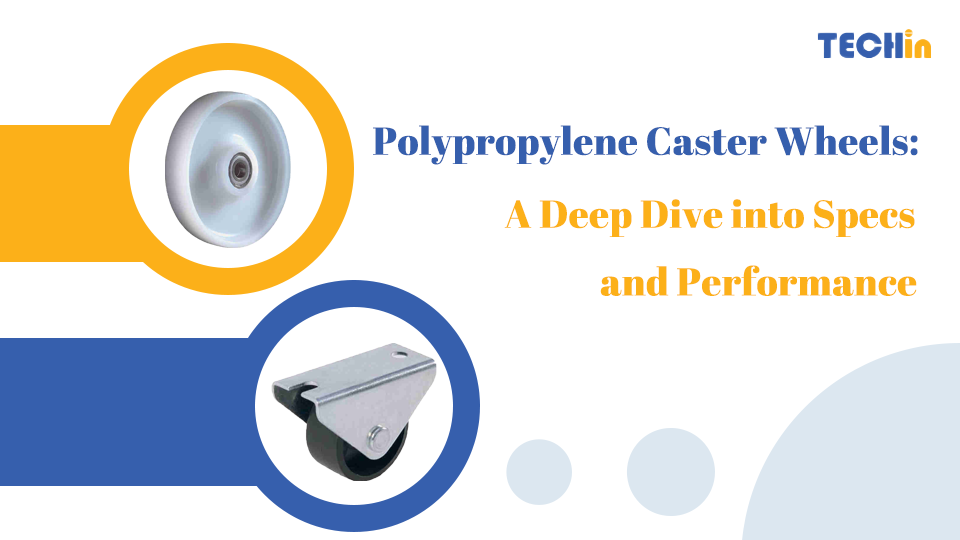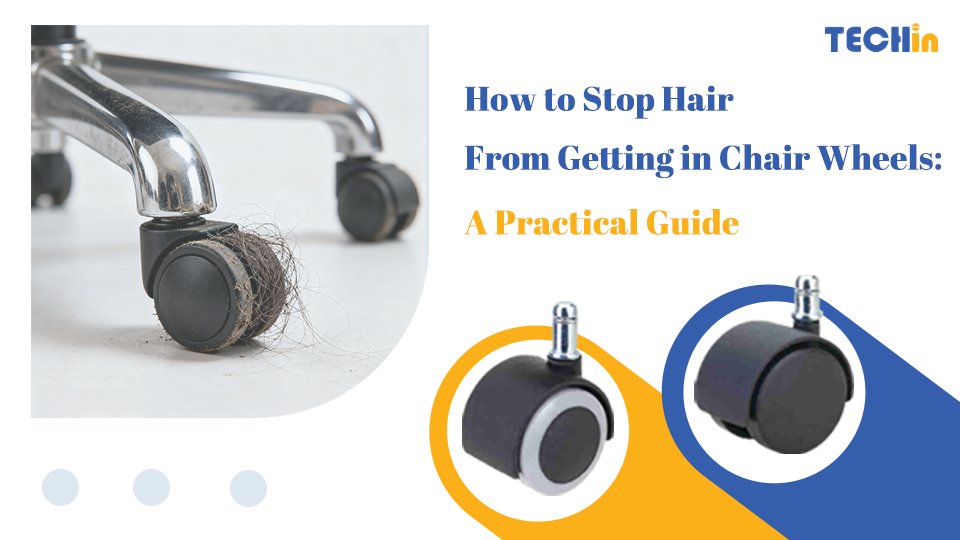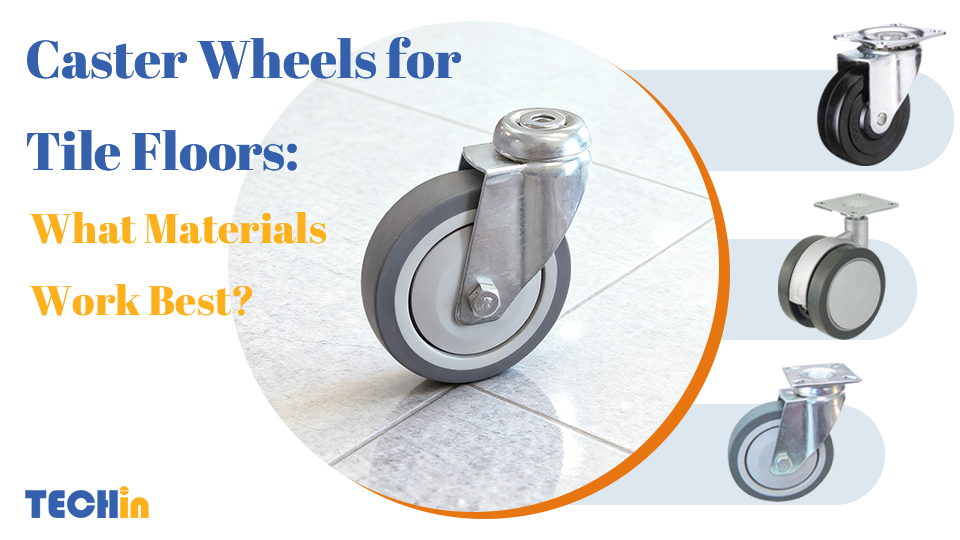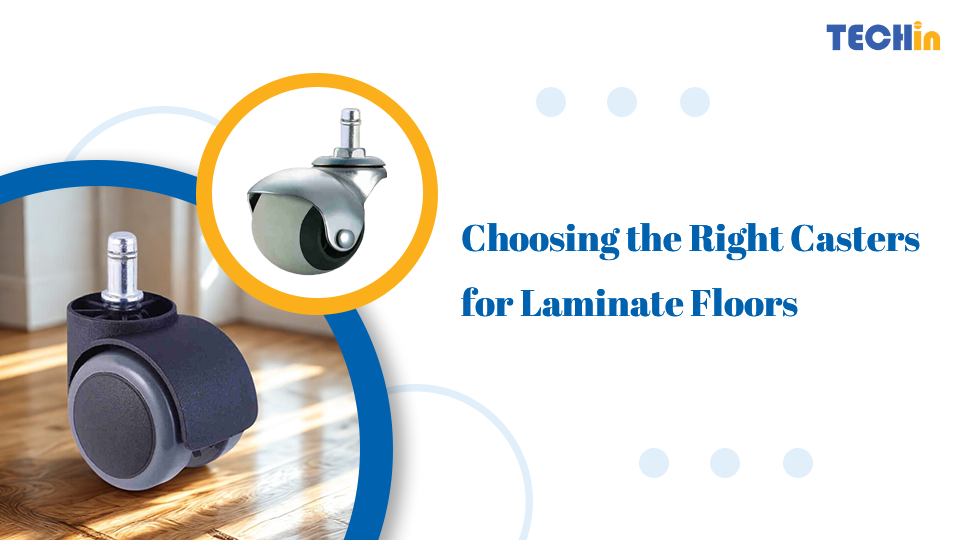The difference between equipment that glides effortlessly and pieces that are difficult to move often comes down to key components: the caster wheels. A common question we hear is, “Do bigger caster wheels actually roll easier?” The answer lies in how wheel diameter and other factors affect effort, performance, and safety. Let’s explore the science behind caster selection and how to choose the right one for your application.
To put it directly: Yes, larger caster wheels generally roll with less effort. Bigger wheels reduce rolling resistance, require less force to initiate movement, and navigate uneven floors, thresholds, and debris more effectively. They also tend to offer improved load capacity and durability. However, it’s important to note that they can increase equipment height and may have a higher initial cost. The goal is to find the optimal balance between ease of movement, design requirements, and your specific application.
Now that we’ve established the fundamental principle, let’s delve deeper into the factors, benefits, drawbacks, and buying tips that every procurement manager should know.
Is a Bigger Caster Wheel Easier to Move?
The short answer is yes. From a physics standpoint, a larger wheel creates a better angle of approach to the floor surface, meaning less resistance when starting and maintaining movement. For your team, this translates directly to less physical strain when pushing or pulling carts, racks, or machinery.
For example, a cart equipped with 200 mm wheels will roll noticeably smoother than one with 75 mm wheels on the same surface. The larger diameter helps it overcome small obstacles like seams, debris, or minor floor imperfections without getting caught.
This makes them the ideal choice for warehouses, factories, and retail environments where carts must travel long distances or cross different flooring types.
What Are the Downsides of Bigger Caster Wheels?
While larger wheels offer significant advantages, they aren’t the universal solution. It’s crucial to consider their potential limitations before making a decision.
| Downside | Impact on Application |
|---|---|
| Increased equipment height | May affect loading/unloading ergonomics. |
| Higher cost | Larger wheels usually cost more initially. |
| Space limitations | Some machines/racks can’t fit large casters. |
| Added weight | Bigger casters may be heavier. |
Ultimately, the principle isn’t that “bigger is always better,” but that buyers must weigh performance benefits against practical design and budget constraints.
What Factors Affect Caster Rollability Besides Size?
Wheel diameter is a primary factor, but it’s not the only one that determines a caster’s rollability. A comprehensive assessment includes several other key elements:
- Wheel Material: Hard wheels (like steel or nylon) roll easier on smooth floors, while softer wheels (like rubber or polyurethane) provide better grip and floor protection but can increase resistance.
- Bearings: Precision ball bearings significantly reduce friction and provide a smoother roll compared to standard plain bore wheels.
- Load Capacity: Overloading casters, regardless of size, increases resistance and makes movement more difficult.
- Floor Surface: Concrete, tile, carpet, or outdoor terrain each interacts differently with various caster materials and diameters.
- Wheel Width: Narrow wheels generally offer less rolling resistance, while wider wheels distribute weight more effectively but may require more effort to start moving.
For procurement managers, evaluating these elements together is the key to making a well-informed purchase that balances cost, durability, and performance.
How Does Wheel Size Affect Caster Performance on Rough Surfaces?
One of the most significant advantages of larger caster wheels is their superior performance on rough or uneven surfaces.
Consider the example of a small 75 mm wheel encountering a crack in the floor. It is likely to get stuck, requiring extra force to proceed. In contrast, a 150 mm wheel can “bridge” that same crack, rolling over it with minimal effort and maintaining momentum.
That’s why large wheels are recommended for environments with:
- Outdoor use where debris is common.
- Factory floors with expansion joints or uneven concrete.
- Warehouses where thresholds, ramps, or dock plates are frequent.
In short, if the application involves less-than-perfect flooring, larger diameter casters are the safer, more efficient choice.
How to Select the Right Wheel Size for Your Caster Needs
Now, let’s apply these principles to the selection process. Here’s a simple framework procurement managers and buyers can follow:
Step 1. Assess the environment
- Smooth indoor floor? Smaller wheels may be sufficient.
- Rough, uneven, or outdoor surfaces? Opt for larger wheels.
Step 2. Consider load requirements
- Heavy-duty equipment benefits from larger wheels since they distribute weight better and reduce wear.
- Light-duty carts may not need oversized casters.
Step 3. Balance ergonomics and height
- If reducing push effort is critical (e.g., to meet safety standards), larger wheels are worth the added height.
- For applications where working height is fixed, find the largest wheel that fits the design.
Step 4. Check cost vs. longevity
- Larger wheels often last longer and require less maintenance, which can offset the higher initial cost.
Step 5. Match material to surface
- Hard wheels for smooth floors.
- Softer polyurethane or rubber wheels for mixed or delicate floors.
Quick Comparison: Small vs. Large Caster Wheels
This quick-glance table helps summarize the key differences to match wheel size to application needs.
| Feature | Small Wheels (50–100 mm) | Large Wheels (125–250 mm) |
|---|---|---|
| Effort to roll | Higher | Lower |
| Rough surface handling | Poor | Excellent |
| Equipment height | Low profile | Raised platform |
| Load capacity | Limited | Higher |
| Cost | Lower | Higher |
| Best for | Light carts, tight spaces | Heavy loads, long distances |
Summary
Caster wheel size and swivel radius are critical factors that directly influence effort, performance, and durability. While larger wheels typically roll easier, an optimal selection always depends on a careful balance of the operating surface, load requirements, manoeuvrability needs, and budget. By choosing wisely, you ensure your equipment operates smoothly and efficiently, with reduced physical strain.

